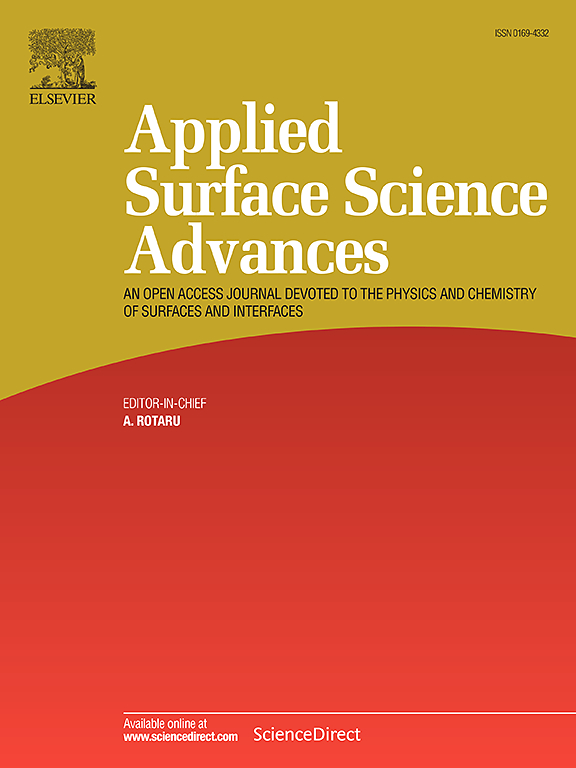Performance of Ni-Ce oxide black protective coatings produced via photo-assisted potentiodynamic deposition
IF 8.7
Q1 CHEMISTRY, PHYSICAL
引用次数: 0
Abstract
Black coatings have garnered considerable interest from researchers due to their distinctive properties and wide-ranging applications. This study investigates the effects of illumination and deposition potential on the properties of Ni-Ce oxide black protective coatings and elucidates the possible reasons for the changes in hydrophobicity. The results indicate that illumination accelerates the coating deposition process. Under illumination, the coating thickness increased from 3.27 μm to 5.44 μm, and the surface roughness rose from 0.38 to 0.84. The absorption rate in the UV–visible region and emission properties of the coating deposited with photo illumination reached up to 95 % and 0.87, respectively. Moreover, by manipulating of the deposition potential range, precise control over the coating’s thickness and roughness was achieved, enabling the optimization of its absorption and emission properties. The optimal deposition potential range was found to be between 0 and -1.4 V. Illumination conditions also play a crucial role in the rate of change of the water contact angle. The contact angle of water increased from 19.2° to 132° as the placement time increased. This significant enhancement in the water contact angle variation could be attributed to the adsorption of hydrocarbons from the ambient air. This research provides a promising methodology for the development of black coatings with exceptional absorptivity and emissivity, which may find applications in the aerospace industry and precision optical instruments.

光辅助动电位沉积法制备Ni-Ce氧化黑防护涂层的性能
黑色涂料由于其独特的性能和广泛的应用而引起了研究人员的极大兴趣。本文研究了光照和沉积电位对Ni-Ce氧化黑防护涂层性能的影响,并分析了其疏水性变化的可能原因。结果表明,光照加速了涂层的沉积过程。光照下,涂层厚度从3.27 μm增加到5.44 μm,表面粗糙度从0.38提高到0.84。在光照射下,涂层在紫外可见区的吸收率和发射性能分别达到95%和0.87。此外,通过控制沉积电位范围,可以精确控制涂层的厚度和粗糙度,从而优化其吸收和发射性能。最佳沉积电位范围为0 ~ -1.4 V。光照条件对水接触角的变化率也起着至关重要的作用。随着放置时间的延长,水的接触角从19.2°增加到132°。水接触角变化的显著增强可归因于从环境空气中吸附碳氢化合物。该研究为开发具有特殊吸收率和发射率的黑色涂层提供了一种有前途的方法,可以在航空航天工业和精密光学仪器中找到应用。
本文章由计算机程序翻译,如有差异,请以英文原文为准。
求助全文
约1分钟内获得全文
求助全文

 求助内容:
求助内容: 应助结果提醒方式:
应助结果提醒方式:


